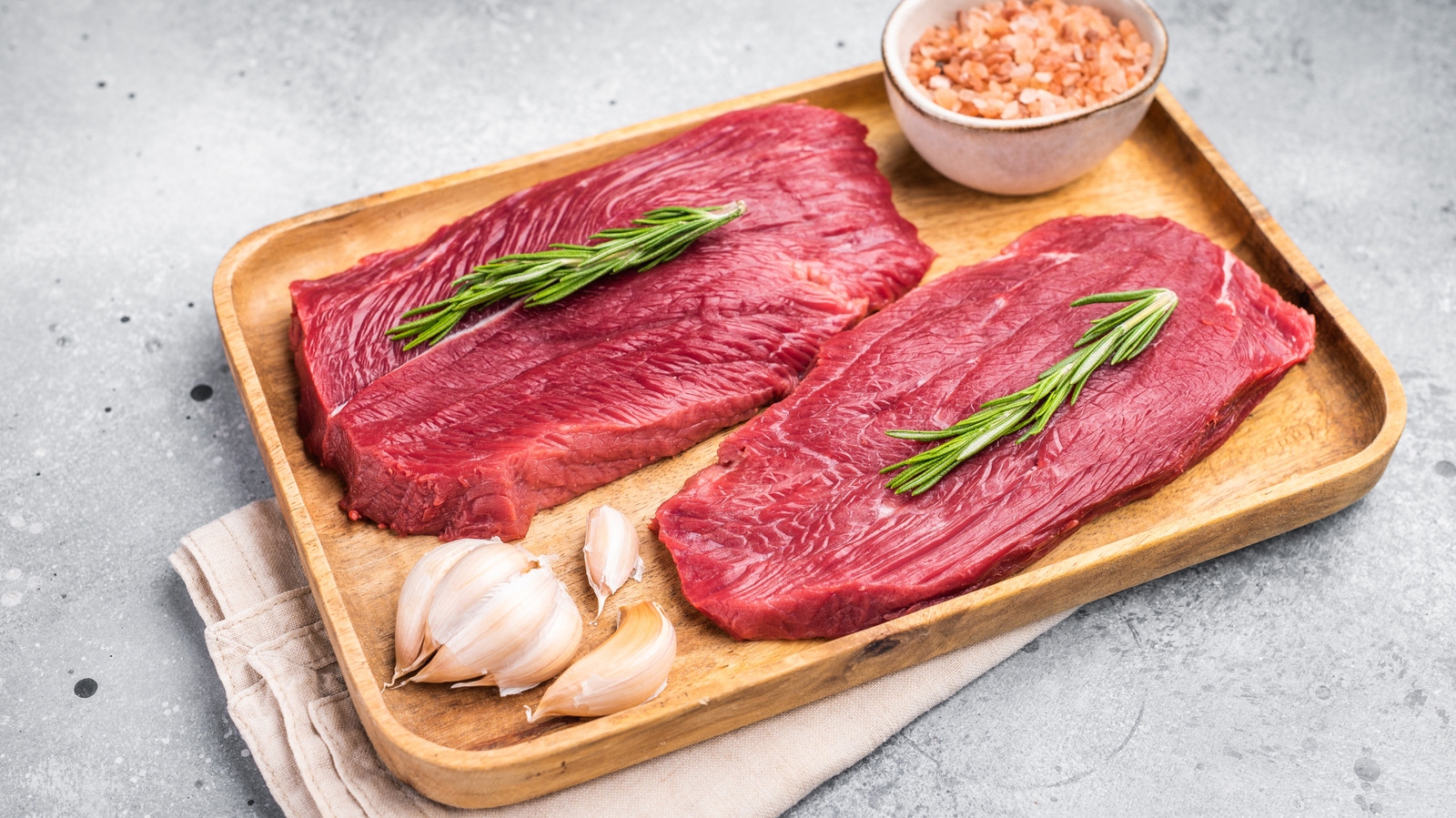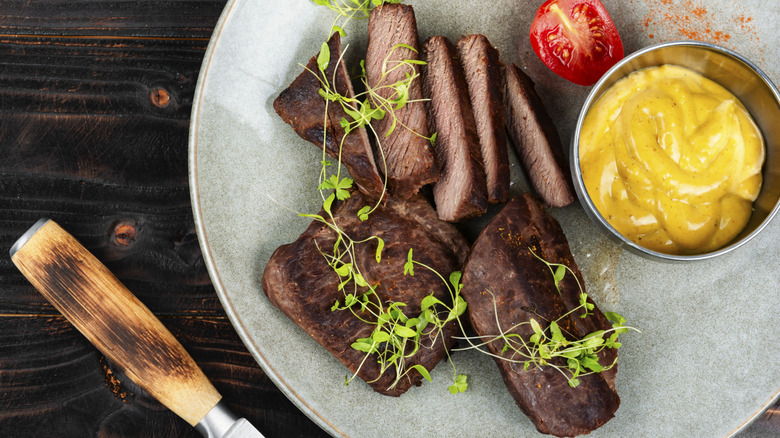We may receive a commission on purchases made from links.
It’s hard to beat the succulent flavor of a restaurant-quality ribeye steak, but to switch up your protein for something a bit leaner, why not think outside the box and give ostrich steak a try? While ostriches are technically birds and the USDA classifies their meat as poultry, the taste and texture of ostrich steak is more akin to beef than duck, turkey, or chicken. Many people compare this lean meat to filet mignon and/or grass-fed beef in taste and texture. It’s also considered one of the healthiest red meats considering it is 97% to 99% fat free and contains around 24 grams of protein per 3-ounce serving.
When raw, ostrich steak has a deep, bright red hue, similar to venison, and a noticeable absence of fat marbling. Although it might look like venison, it doesn’t have the gamey flavor of deer meat and is more tender like beef. Another benefit of ostrich meat is that while fatty steaks often experience shrinkage when cooked due to fat melting, ostrich steak retains its size because of its low fat content.
Ostrich steak might taste similar to grass-fed beef, but it cooks somewhat differently. Therefore, make sure to follow a few helpful tips when cooking this exotic meat for your friends and family.
Tips for preparing ostrich steak
Like beef, there are a number of ways you can cook ostrich steak, including grilling, pan-frying, and roasting. For extra flavor, you might marinate it overnight in a simple mixture of olive oil, rosemary, and thyme, or create a savory, umami-flavored marinade with ingredients like soy sauce, mustard, Worcestershire sauce, white wine vinegar, and lemon juice. If pan-searing the steak in a cast iron skillet, apply an easy dry rub of salt, pepper, and garlic powder, and fry it in olive oil or butter.
No matter how you cook your ostrich steak, keep in mind that it requires less time to cook than beef due to its leanness. This can be beneficial for making a quick dinner but also provides more chance for overcooking and drying out the meat. Thus, it should always be cooked to medium or medium-rare to maintain its tenderness. Per USDA guidelines, ostrich steak can safely be cooked to an internal temperature of 145 degrees Fahrenheit with a 3 minute resting period.
If you enjoy ostrich steak, consider trying an ostrich burger or any of the other wildest burgers you can order in America. Or, if you’re feeling extra adventurous, why not follow some easy instructions for cooking and eating an ostrich egg? For a quick intro to ostrich meat, try store-bought ostrich jerky or meat sticks like Buffalo Bob’s Wild Game Snacks – Ostrich Jerky or Ostrim Beef & Ostrich Jerky Snack Sticks.






